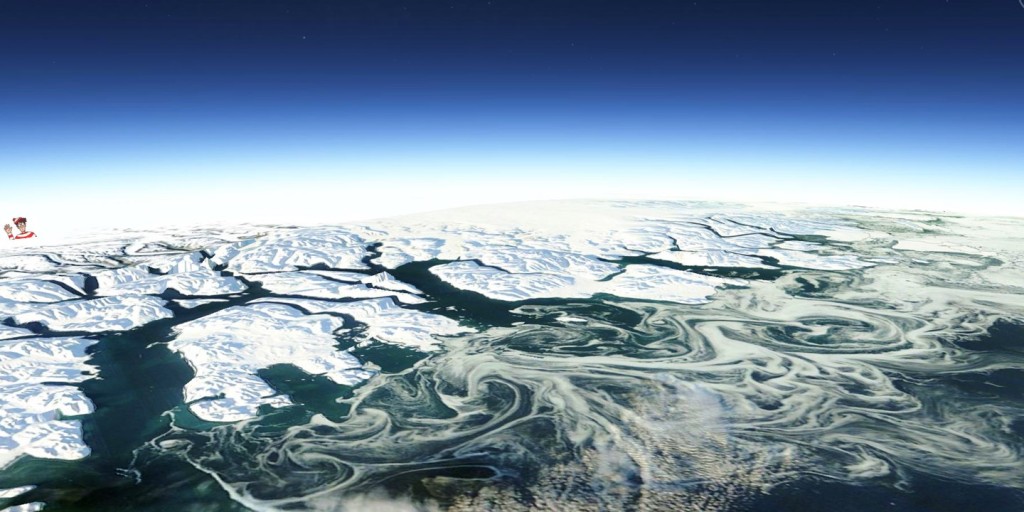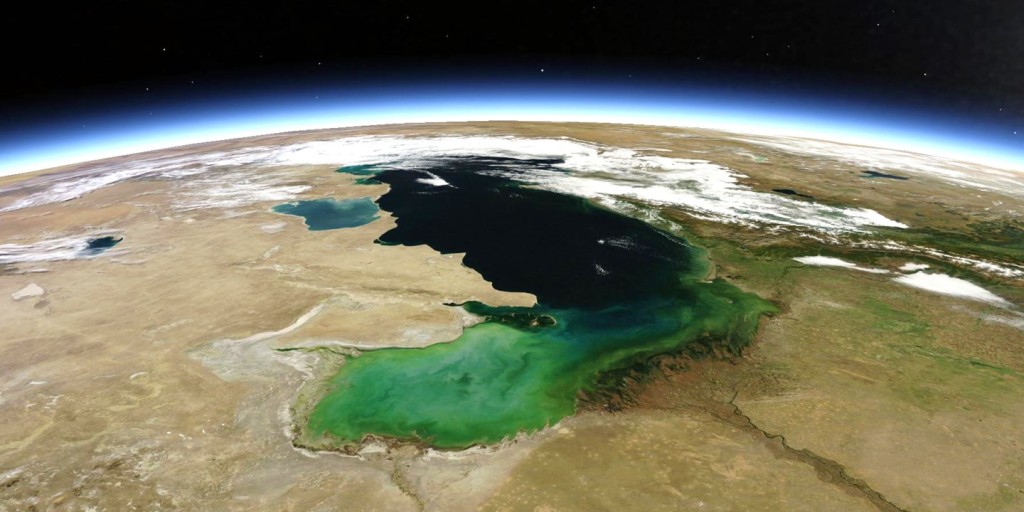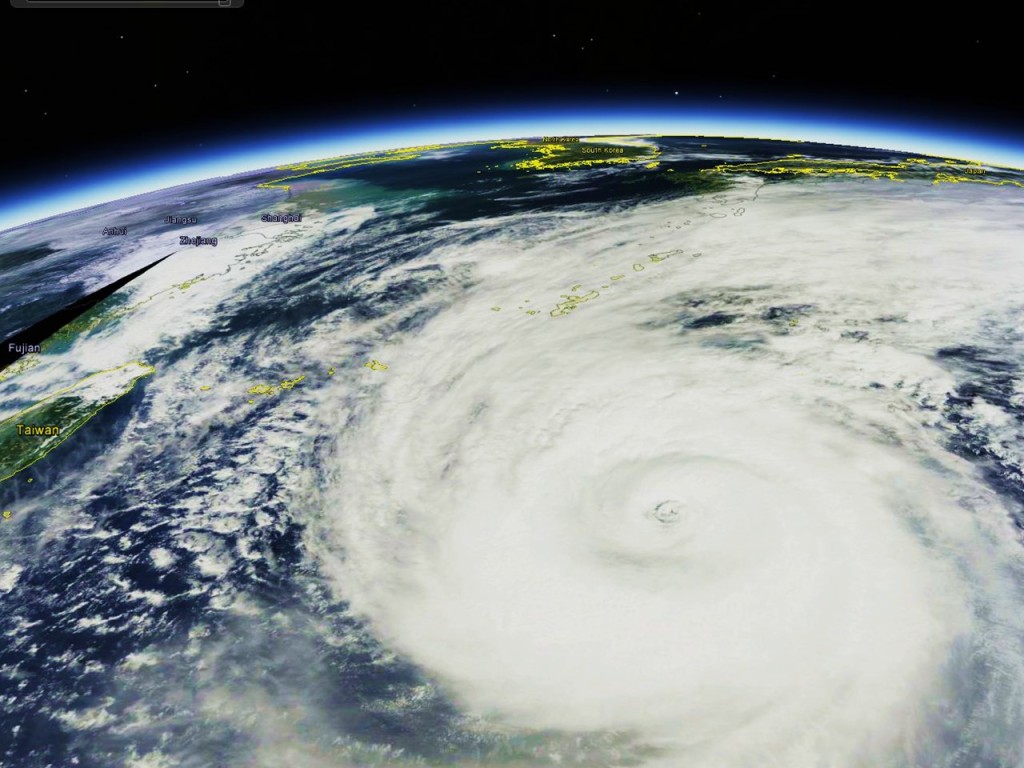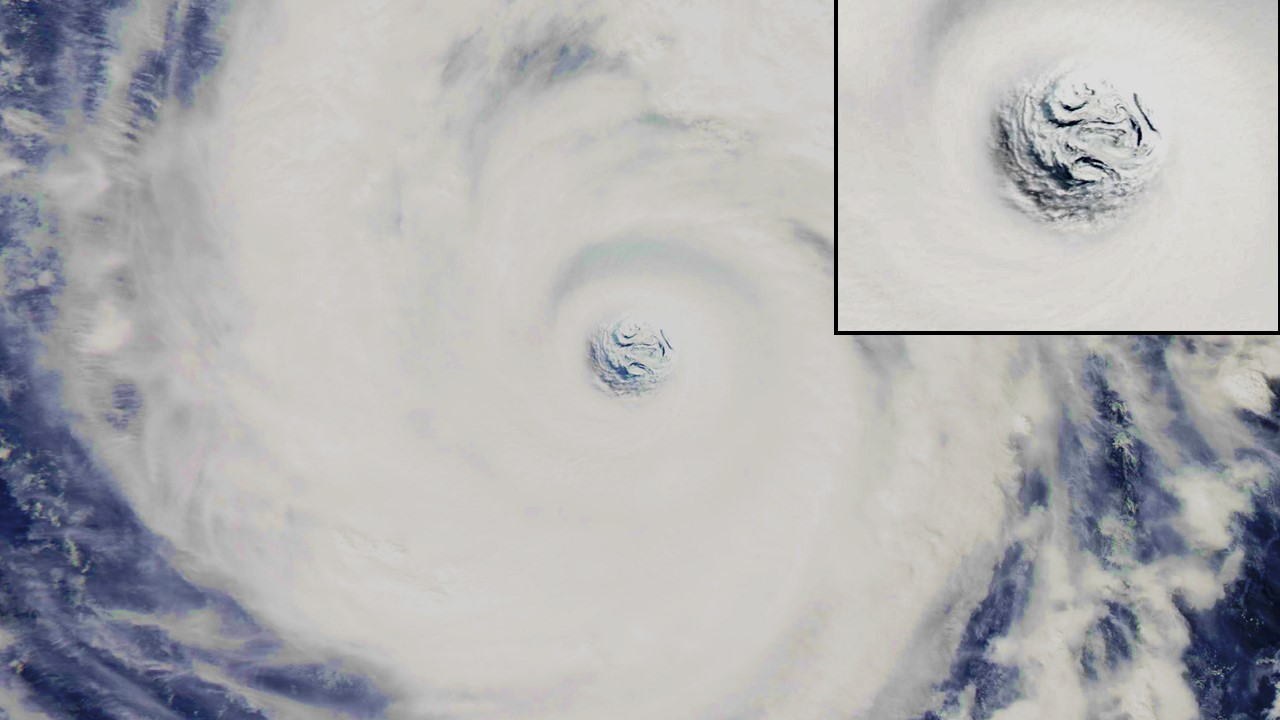Chicago and Lake Michigan are seen in this NASA MODIS image from yesterday, October 11, 2014 (click to enlarge):
Most of the fall color is from the corn crop vegetative die off as the corn kernels ripen.

Sea ice floes originating in the Arctic Ocean swirl in the currents off of the northeast coast of Greenland today (click for full size):

Ice swirls in currents off the northeast coast of Greenland (NASA Terra MODIS image, October 11, 2014, remapped into Google Earth).
The ice sheet of Greenland can no longer be distinguished from fresh snow which has fallen on what was bare ground only a few weeks ago along the coast.
Here’s another satellite view from today, looking north across Egypt’s Nile River Delta and the eastern Mediterranean Sea (click for full size), imaged early afternoon October 11, 2014 by the MODIS instrument on NASA’s Aqua satellite:
Here’s a satellite view looking south across the Caspian Sea today, October 11, 2014, from the MODIS instrument on NASA’s Terra satellite (click for full size):

The Caspian Sea on October 11, 2014, as seen by the MODIS instrument on NASA’s Terra satellite, remapped into Google Earth.
OK, here’s a bonus true-color satellite image from today (NASA Terra satellite, MODIS instrument, taken approximately 10:30 a.m. local time), looking northward from northern India across the Himalayas and the Tibetan Plateau (click for full-size version):
Many years ago as a NASA employee I was asked if I wanted to be considered to fly on the Space Shuttle as a Payload Specialist to support an Earth Observation Mission instrument I was principal investigator on. I turned down being considered, and the mission was cancelled anyway (as were many others) after the Challenger disaster. I went on to work on NASA’s (unmanned) Mission to Planet Earth, while Fred Leslie from our group ended up flying on the Shuttle with his fluid dynamics experiment.
Fred was probably much more suited to flying in space than me, having jumped out of airplanes over 2,500 times (“in a row”, as he liked to say). He brought back home movies of living on the Shuttle, and he remarked on how three-dimensional the Earth looks from space. You just want to stare out the windows, but every minute of your time up there is scheduled with a variety of tasks and you don’t have the luxury.
Now, with a variety of Earth observation satellites on-orbit, near-realtime access to that data, and the amazing mapping capabilities of Google Earth, we can create images of the Earth on a daily basis, from viewing perspectives as if we are flying in space. I thought I would provide some of these for your enjoyment, the locations chosen mostly based upon their beauty.
This is South Australia today, looking south toward Antarctica. Since it’s one of the few places on Earth that has “Spencer” on the map (Spencer Gulf), I thought I’d start my “Dr. Roy’s Earth Today” series there (click for full-size version):
I spent three weeks in Townsville, Australia in January 1993 supporting NASA’s portion of the TOGA-COARE field experiment. I had a specially designed microwave radiometer we were flying over thunderstorms in the NASA ER-2 high-altitude aircraft, a modified U2. The experiment was a replacement for the cancelled Space Shuttle mission.
For those who have never been there before, Australia is an amazing and exotic place. Rain forests next to deserts. Giant lizards, giant bats, and giant mice (called “roos”) that can walk on their hind legs. I remember never being able to get my bearings because the sun was always in the wrong part of the sky, and walking through a pouring rain at night without a cloud in the star-filled sky.
Here’s the NASA MODIS image of 140 mph Typhoon Vongfong from several hours ago, which I have displayed in Google Earth, as it approaches Okinawa (click for full size version):

Typhoon Vongfong, at 140 mph intensity, as seen by the NASA MODIS instrument midday October 10, 2014
As seen in the latest forecast track, Vongfong is expected to make a direct hit on Okinawa, then progress up through the main islands of southern Japan.
Since you folks paid for it, you might as well know how to use it….
You can access the latest (or any previous day’s) MODIS data from either the Aqua or Terra polar-orbiting satellites, import it into Google Earth, and make your own Big Blue Marble.
I didn’t know how to do this until recently. I had to ask in a NASA meeting we were having, and even the knowledgeable people present had to ask someone else.
1) go to the MODIS Worldview website
2) choose the month and day (along the bottom)
3) choose either the Terra or Aqua satellite (upper left)..they sample 3 hours apart, nominally 10:30 a.m. and 1:30 p.m.
4) click on the camera icon (upper right) for downloading data,
5) choose a resolution (I chose 5 km for a quasi-global image, 250 meters would be for a smaller region…there is a filesize limit involved here)
6) resize the “camera window” to get the area you want
7) choose KMZ for the Google Earth file format, and click “Download”
After the file downloads to your computer, you should get a prompt to open the file in Google Earth (downloadable here). Then, you can use all of the other Google Earth functionalities to cruise around the world.
The highest resolution available is 250 meters, so don’t expect to see streets and trees like the high-resolution aircraft imagery in Google. At best, you can pick out some interstate highways. But what you get is daily data, with today’s data only a few hours after it is collected.
Rated the strongest typhoon since Haiyan, which killed 6,000 people in the Philippines last November, Super Typhoon Vongfong in the extreme western tropical Pacific now has peak winds of 165 mph and ocean swells as high as 50 ft as it moves northward toward Okinawa, Japan.
I put together this NASA MODIS image montage, only a few hours old, which shows the intricate swirling cloud structure within the eye of the typhoon early Thursday afternoon (click for full-size):

Super Typhoon Vongfong in the western Pacific as viewed by the MODIS imager on the NASA Aqua satellite, early Thursday afternoon.
Here are some other great views of Typhoon Vongfong at mashable.com.